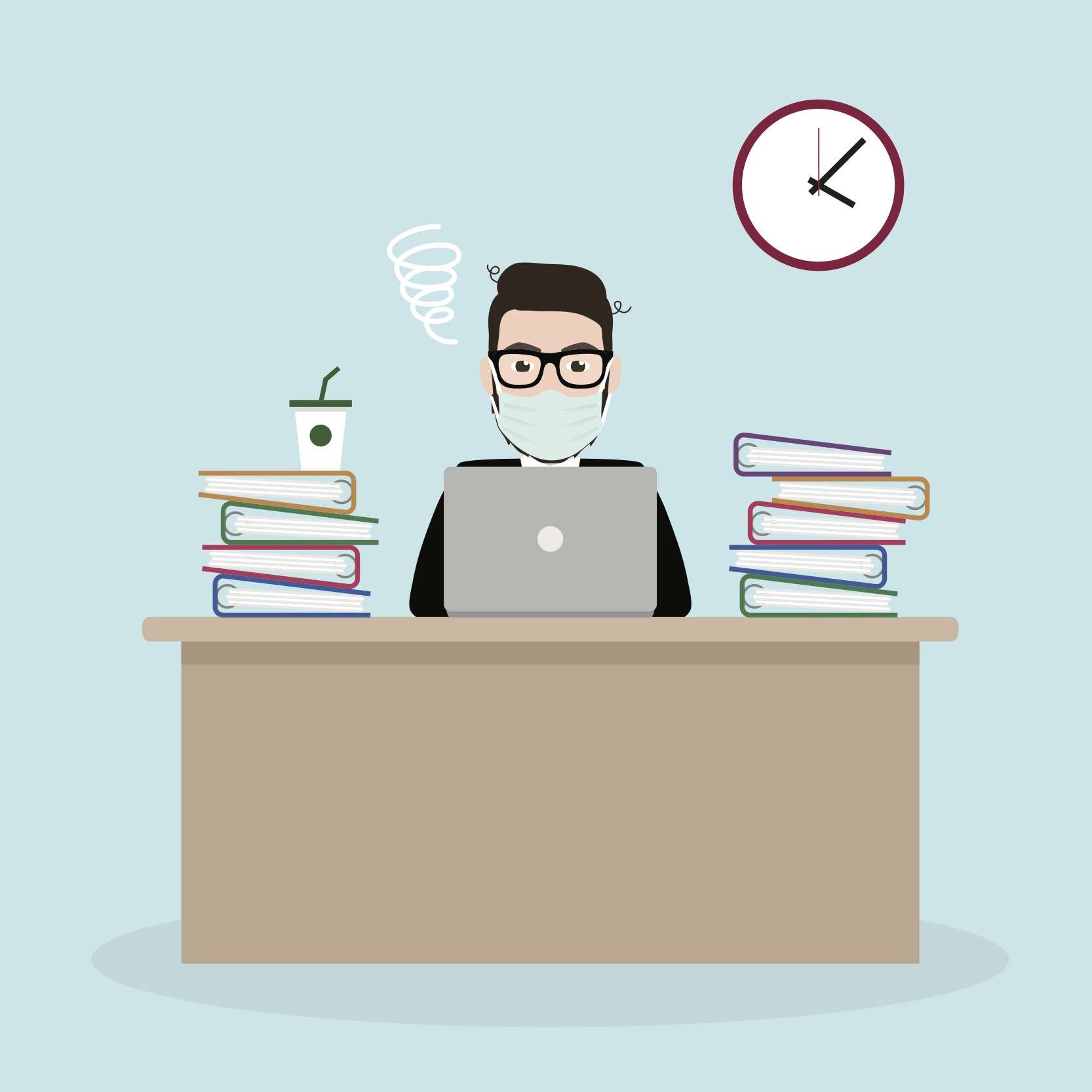Navigating Employee Leave During COVID-19 Pandemic

The legal landscape involving employee sick and family leave is rapidly changing to respond to the COVID-19 pandemic, and businesses should inform themselves on these new measures. Below please find information about the Workers and Families First Program recently passed by the City of San Francisco, the Families First Coronavirus Response Act passed by the Federal government, and several general questions you may be wondering about the COVID-19 pandemic and your workforce.
Workers and Families First Program - San Francisco
San Francisco’s Workers and Families First Program sets aside $10 million in public funding to offer financial assistance to local businesses and nonprofits so that they may provide their workers impacted by COVID-19 up to an additional 5 days of sick leave beyond the employer’s current program. All of San Francisco’s businesses will be eligible, and twenty percent of that $10 million has been specifically reserved for small businesses with 50 employees or less. Workers who have exhausted their current sick leave can utilize the program if they are:
- sick,
- self-quarantined to prevent spread,
- caring for a sick family member,
- home because of a temporary work closure in response to a public official’s recommendation, or
- caring for a child who is home because of school or daycare closures in response to a public official’s recommendation.
For general information, read the Office of Labor Standards and Enforcement's guidance on COVID-19, or call 415-554-6413. Applications should be up soon, and you can check San Francisco’s Assistance & Guidance for Businesses and Workers Impacted by COVID-19 site periodically for more information.
The City is exploring additional measures to alleviate the hardship on small businesses, including a moratorium on commercial evictions on small and medium-sized businesses in San Francisco (see here).
Families First Coronavirus Response Act - Federal Law
On March 18, 2020, theThe Federal government recently passed the Families First Coronavirus Response Act (FFCRA). There are two components to the FFCRA—paid family leave and paid sick leave. Both components of the FFCRA will go into effect on April 12, 2020 and will remain in effect until December 31, 2020. Please note that because the FFCRA is new law, there will likely be additional guidance interpreting its provisions, and you should seek advice of counsel with respect to its terms.
Which Employers are Covered Under the FFCRA?
Both components of the FFCRA will apply only to private employers with fewer than 500 employees. Private businesses with at least 500 employees are not covered by the bill. The Department of Labor has the power to exclude employers with fewer than 50 employees where a hardship exemption applies. Such employers can apply for an exemption from providing paid family and sick leave if it "would jeopardize the viability of the business." Covered employers that are required to offer emergency FMLA or paid sick leave will be eligible for refundable tax credits (see below).
The FFCRA does not apply to businesses that have had to close due to lack of businesses or because of forced business closure under a federal, state, or local order (whether before or after April 1). Additionally, the FFCRA provisions cannot be applied retroactively to any leave taken prior to April 1).
Paid Family Leave
The FFCRA expands on the Family and Medical Leave Act (FMLA) leave as related to the COVID-19 outbreak to provide for the Emergency Family and Medical Leave Expansion Act (EFMLEA).
Q: Which employees can take this expanded family leave due to COVID-19?
A: Employees working for at least 30 of the 60days for a covered employer are immediately eligible for the expanded family leave benefits. Additionally, the Coronavirus Aid, Relief, and Economic Security Act (CARES Act), which was enacted on March 27, 2020, expanded family leave to include employees who (i) were laid off by the covered employer after March 1, 2020; (ii) had worked for the covered employer for at least 30 of the 60 days prior to the layoff; and (iii) were rehired by the employer. Eligible employees will be able to take up to 12 weeks of EFMLEA leave where they are unable to work or telework because their minor child's school or child care service is closed as a result of the COVID-19 outbreak.

Q: How does this expanded family leave work?
A: The first 10 days of EFMLEA leave is job-protected but unpaid. Employees, however, may elect to substitute these days with accrued vacation, personal leave, or sick leave for the unpaid leave under this section (note that the employer cannot require such substitution). After these 10 days are exhausted, employers must pay the employee not less than two-thirds of the employee’s regular rate of pay for each day of FMLA leave taken thereafter, capped at $200 per day, and $10,000 in the aggregate. The benefits expire at the end of the year.
Paid Sick Leave
The FFCRA also permits eligible employees to use sick leave related to the COVID-19 outbreak.
Q: Which employees can take this paid sick leave due to COVID-19?
A: All full-time employees (subject to limited exceptions) regardless of their length of employment are entitled to take 80 hours paid sick leave immediately. Part-time employees get a prorated amount.
Employees may use this additional sick leave where they cannot work or telework because:
- They are subject to a Federal, State, or local quarantine or isolation order related to COVID-19;
- The employee has been advised by a health care provider to self-quarantine due to COVID-19-related concerns;
- The employee is experiencing symptoms of COVID-19 and seeking a medical diagnosis;
- The employee is caring for someone who is subject to a quarantine or isolation order or who has been advised to self-quarantine;
- The employee is caring for a child if the child’s school or place of care is closed or the child-care provider is unavailable because of COVID-19 precautions; or
- The employee is experiencing any other substantially similar condition specified by the Secretary of Health and Human Services in consultation with the Secretary of Treasury and the Secretary of Labor.
Q: How does this expanded family and medical leave work?
A: Employers are required to pay an employee: (i) the employee’s rate of pay, up to a capped atof $511 per day and $5,110 in the aggregate for each employee who takes sick leave taken for reasons 1, 2, and 3 above; and (ii) at two-thirds the employee’s regular rate of pay capped at $200 per day and $2,000 in the aggregate for each employee who takes sick leave taken for reasons 4, 5, and 6 above.
These 80 hours are in addition to and not in lieu of any other government mandated or employer-provided paid sick leave benefits. Moreover, the employer must allow its eligible employees to use COVID-19-related sick leave before other sick leave—the employer cannot mandate otherwise. Importantly for employers, these additional hours cannot be carried over into the new year, nor are they paid out at termination.
Tax Credits for Employers
The FFCRA also includes terms that provide an employer with a refundable tax credit equal to 100% of qualified paid leave benefits paid by an employer subject to certain caps and offset against social security taxes paid by the employer. Employers would have had to bear the up-front costs of paid leave under the FFCRA, potentially creating cash-flow issues. To address these concerns, the CARES Act created a streamlined process whereby employers can request an advance of the anticipated paid leave tax-credits. The IRS is expected to release additional guidance concerning the tax-credit advance process soon.
General Questions
Q: What should I do if an employee tests positive for COVID-19?
A: Send all employees home who had contact with the infected employee. Ask the infected employee who he or she came in contact with or was in close proximity to in the previous 14 days to ensure that you have a complete list of employees who may be in danger of infection. When informing employees of a possible exposure to COVID-19 and sending them home, do not identify the individual who tested positive. The Americans with Disabilities Act (ADA) privacy rules restrict employers from sharing personal health information of an employee, including testing positive for COVID-19. Additionally, if you work in a shared co-working space, you should also inform the co-working staff so that they can take whatever precautionary measures they deem necessary. Relatedly, there is no obligation to report a suspected or confirmed case of COVID-19 to the CDC—that responsibility falls on the healthcare provider that receives the confirmation of a positive test result.

Q: Can I ask my employees if they have tested positive for COVID-19?
A: As an employer, you have less of a risk of running afoul of the ADA if you ask employees how they are feeling generally (e.g. how are you feeling today?) and not specifically asking if they have a specific illness (e.g. have you tested positive for COVID-19?).
Q: If an employee is not feeling well, can I ask him or her to go home?
A: Yes, you should ask employees who display common symptoms of COVID-19 (including dry cough or respiratory issues) to leave the office and work from home.
Q: Is it okay if an employee refuses to come into work?
A: Under the Occupational Safety and Health Act (OSHA), employees are only entitled to refuse to go into work if they believe the following:
- Where possible, the employee has asked the employer to eliminate the danger, and the employer failed to do so; and
- The employee refused to work in "good faith." This means that the employee must genuinely believe that an imminent danger exists; and
- A reasonable person would agree that there is a real danger of death or serious injury; and
- There isn't enough time, due to the urgency of the hazard, to get it corrected through regular enforcement channels, such as requesting an OSHA inspection.
The current COVID-19 outbreak likely makes it so that all of these factors are true. Relatedly, OSHA has provided a Guidance on Preparing Workplaces for COVID-19 (see here).
Q: Can we require a doctor’s note before allowing a sick employee to return to work?
A: So long as this practice is applied consistently across your workforce, then such clearance can be required. However, guidance from the Centers for Disease Control and Prevention (CDC) suggests employers remove such requirements during a health crisis as access to health care providers may be limited.
DISCLAIMER: The information in this article is provided for informational purposes only and should not be construed or relied upon as legal advice. This article may constitute corporate attorney advertising under applicable state laws.
Categories
Recent Posts
- Negotiating Side Letters in Pre-Seed and Seed Rounds
- Key Terms: SAFEs & Convertible Notes for Pre-seed Funding
- A Guide To Raising Money From Accredited Investors
- Startup 101: Overview of Pre-Seed and Seed Investment
- SPZ Legal's Commitment to Social Impact with Pledge 1%
- Issuing Equity to Service Providers? A Guide to Equity Incentive Plans for Startups.
- A Guide to Navigating the New Beneficial Ownership Information Reporting Requirements
- Unveiling the Power of Venture Debt: A Legal Guide for Startup Founders